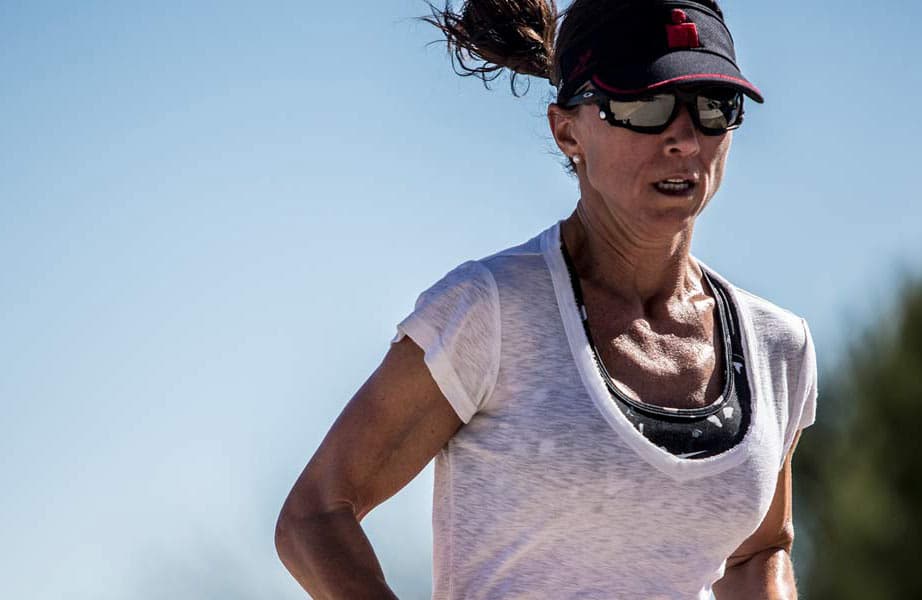
A Workout to Pump Up the Benefits of Your Long Runs
By Jason Koop, CTS Premier Coach
While some athletes have trouble making the connection between complicated interval workouts and race-day performance, virtually everyone understands the basic concept behind long runs, long rides, and endurance swim sessions. Your event is a long endurance race; therefore it makes sense that you need some relatively long training sessions. Athletes are often much less clear about what exactly they are supposed to be doing during these long sessions.
There is some benefit to just being out there and moving, whether you’re on the bike, in the water, or on the run. For instance, it’s important for beginners to realize they can actually complete training sessions that can last up more than two hours. It’s equally valuable to learn about the mental and physical peaks and valleys you’ll experience during longer (especially solo) sessions, so you’re better prepared to recognize and handle them during competition. More experienced athletes, however, are prone to settling into a comfortable rhythm and just letting the miles slide on by; and in doing so they fail to get as much benefit as they could from either long runs or rides.
[blog_promo promo_categories=”coaching” ids=”” /]Whether you are stepping up from Olympic-distance triathlons or trying to set a PR in your next Ironman 70.3 race, applying more focus to your long runs is crucial. This is particularly true for athletes who already have more than enough endurance to get to the finish line at an Ironman 70.3. When it’s not a matter of whether you finish, but how fast you finish, then you need even more focus on the speed and pace components of your long runs (in addition to focusing on speedwork and lactate-threshold running pace during mid-week interval sessions).
One of the best workouts I’ve found for focusing a triathlete’s long run efforts is a 10k/5k Split Run. The format is quite simple: start with a 10-minute warmup and include 3-5 RunningStrides (20-second gradual accelerations from a jog to a sprint). Then run 10 kilometers (6.2 miles) at your goal pace for the half-marathon you’ll run in your Ironman 70.3. This will be significantly slower than your 10k race pace. Jog easy for 5 minutes. Then run 5 kilometers (3.1 miles), again at your goal race pace for the half-marathon in your Ironman 70.3. Cool down with 10 minutes of easy jogging.
[blog_promo promo_categories=”camp” ids=”” /]Why not run just run 10 kilometers at a faster pace (like 10k race pace)? For more advanced athletes, that is an option. In fact, as you make progress you can use this same workout structure with a variety of pacing strategies in order to continue achieving a training stimulus. However, for moderately-fit triathletes or triathletes stepping up to 70.3, I recommend the structure as written above because the energy cost of running faster (at your 10k race pace) will force you to run the rest of your long run at a pace much slower than your Ironman 70.3 race pace, and potentially reduce your pace to a walk.
The point here is to provide stepping stones to get you to the point where you can run an entire 13.1 miles at your race pace. You may not be able to run 9.3 straight miles at race pace, but you can accumulate 9.3 miles of running at race pace by splitting it up. And even if you struggle to hold your pace during the 5k segment, you’re still better off than slogging away for 9.3 miles at a basic endurance pace. That might help you reach the fitness level where you can shuffle your way through 13.1 miles, but that’s not really what you want to do on race day, right?
► Free Cycling Training Assessment Quiz
Take our free 2-minute quiz to discover how effective your training is and get recommendations for how you can improve.
Better to spend those 9.3 miles (6.2 + 3.1) of a long run session working at a pace that will help you build toward the fitness level that will enable you to run with a spring in your step all the way to the finish line. A more advanced version of this workout would be to run the 10K at your half-Ironman run goal pace, and then run the 5k at your open half-marathon pace (faster than your Ironman 70.3 run pace). This makes the second interval more challenging and creates a greater training workload.
[blog_promo promo_categories=”bucket list” ids=”” /]With the warm-up, recovery between the 10k and 5k portions, and cooldown, you’ll probably cover a total of a bit more than 11 miles, not that far off your total race distance. That’s why this workout is best done about 4-6 weeks out from your race. The first time you do it, your goal may be to use the segments to help you cover the total distance. As your training continues, you could potentially do the workout one more time before race day – or use a modified (shorter) version of it in a brick workout – and see improvement in your ability to keep your pace from falling in the 5k segment.
Jason Koop is Director of Coaching for CTS, author of “Training Essentials for Ultrarunning“, and personal coach to runners, cyclists, and triathletes.
► FREE Mini-Course: Learn How to Maximize Your Limited Training Time
Learn step-by-step how to overcome limited training time and get faster. Walk away with a personalized plan to increase your performance.

Comments 2
run slower, then run faster. brilliant!
Pingback: Start Boosting Your Running Speed Before Winter Is Over - CTS